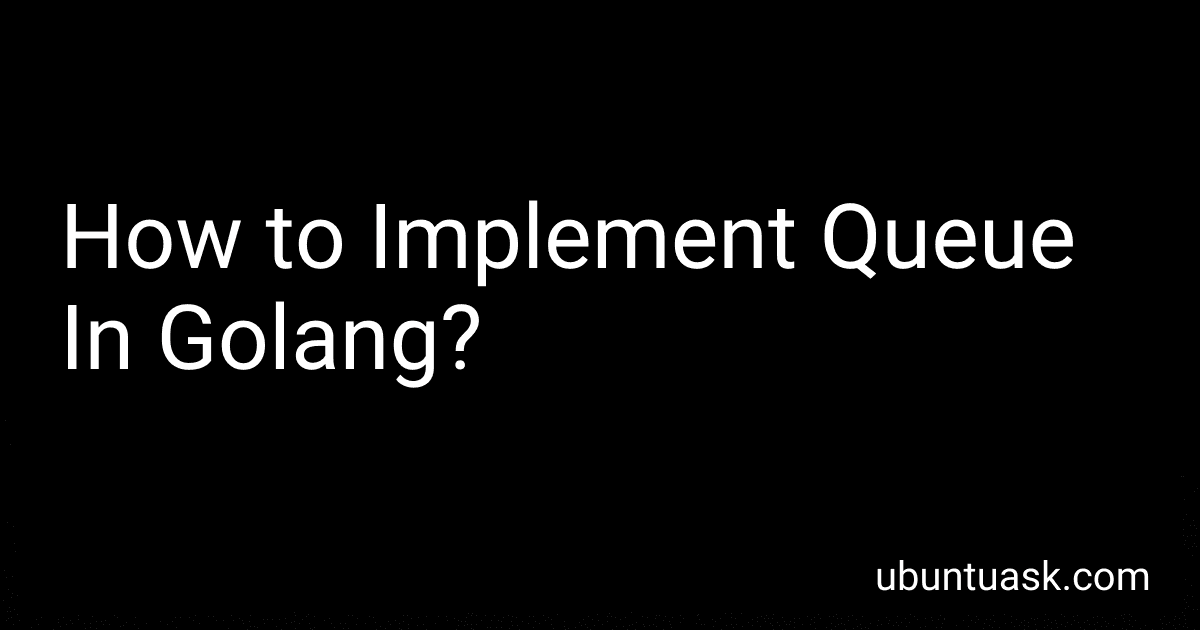Best Golang Programming Books to Buy in December 2025
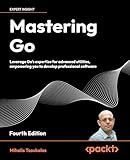
Mastering Go: Leverage Go's expertise for advanced utilities, empowering you to develop professional software


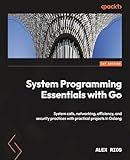
System Programming Essentials with Go: System calls, networking, efficiency, and security practices with practical projects in Golang


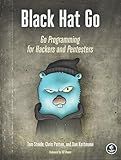
Black Hat Go: Go Programming For Hackers and Pentesters
- MASTER GO PROGRAMMING FOR HACKING AND PENTESTING TECHNIQUES.
- COMPREHENSIVE GUIDE IN ACCESSIBLE PAPERBACK FORMAT.
- ENHANCE SKILLS WITH PRACTICAL EXAMPLES AND REAL-WORLD APPLICATIONS.


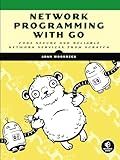
Network Programming with Go: Code Secure and Reliable Network Services from Scratch


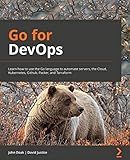
Go for DevOps: Learn how to use the Go language to automate servers, the cloud, Kubernetes, GitHub, Packer, and Terraform


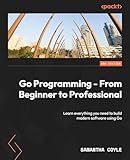
Go Programming - From Beginner to Professional: Learn everything you need to build modern software using Go


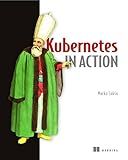
Kubernetes in Action


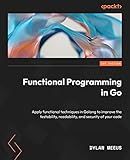
Functional Programming in Go: Apply functional techniques in Golang to improve the testability, readability, and security of your code


To implement a queue in Golang, you can make use of the built-in data structure called a slice. Here's a basic implementation:
- Create a struct to represent the queue: type Queue struct { items []interface{} }
- Initialize an instance of the queue: q := Queue{}
- Implement the basic operations for a queue: a. Enqueue (add an item to the end of the queue): func (q *Queue) Enqueue(item interface{}) { q.items = append(q.items, item) } b. Dequeue (remove and return the item at the front of the queue): func (q *Queue) Dequeue() interface{} { if len(q.items) == 0 { return nil } item := q.items[0] q.items = q.items[1:] return item } c. Peek (return the item at the front of the queue without removing it): func (q *Queue) Peek() interface{} { if len(q.items) == 0 { return nil } return q.items[0] } d. Size (return the number of items in the queue): func (q *Queue) Size() int { return len(q.items) } e. IsEmpty (check if the queue is empty): func (q *Queue) IsEmpty() bool { return len(q.items) == 0 }
With these operations, you can enqueue, dequeue, peek at, get the size, and check the emptiness of the queue.
Note: Since Go is a statically typed language, the queue implementation above is a generic implementation using the interface{} type. This means the queue can hold elements of any type. However, type assertions will be required when retrieving items from the queue. If you want to create a queue that can hold a specific type, you can replace interface{} with the desired type.
How to implement a basic queue in Golang?
To implement a basic queue in Golang, you can use a slice data structure. Here's an example of how to do it:
package main
import ( "fmt" )
type Queue struct { items []interface{} }
// Enqueue adds an item to the end of the queue func (q *Queue) Enqueue(item interface{}) { q.items = append(q.items, item) }
// Dequeue removes and returns the first item from the queue func (q *Queue) Dequeue() interface{} { if len(q.items) == 0 { return nil } item := q.items[0] q.items = q.items[1:] return item }
// Size returns the number of items in the queue func (q *Queue) Size() int { return len(q.items) }
// IsEmpty checks if the queue is empty func (q *Queue) IsEmpty() bool { return len(q.items) == 0 }
// Peek returns the first item in the queue without removing it func (q *Queue) Peek() interface{} { if len(q.items) == 0 { return nil } return q.items[0] }
func main() { queue := Queue{}
queue.Enqueue(1)
queue.Enqueue(2)
queue.Enqueue(3)
fmt.Println(queue.Size()) // Output: 3
fmt.Println(queue.Peek()) // Output: 1
item := queue.Dequeue()
fmt.Println(item) // Output: 1
fmt.Println(queue.Size()) // Output: 2
fmt.Println(queue.IsEmpty()) // Output: false
}
In this example, the Queue struct has four methods: Enqueue, Dequeue, Size, and IsEmpty. Enqueue adds an item to the end of the queue by appending it to the items slice. Dequeue removes and returns the first item from the queue by shifting the slice. Size returns the number of items in the queue, and IsEmpty checks if the queue is empty by checking the length of the items slice. Peek returns the first item in the queue without removing it.
The main function demonstrates how to use the queue by enqueueing three items, peeking at the first item, dequeuing the first item, checking the size of the queue, and checking if the queue is empty.
What is the difference between a queue and a linked list?
A queue and a linked list are data structures that have some similarities, but they also differ in their main characteristics and usage.
A queue is a linear data structure that follows the First-In-First-Out (FIFO) principle. It allows elements to be inserted at the back (enqueue) and removed from the front (dequeue) only. The main operations performed on a queue are enqueue and dequeue, ensuring that the order of insertion and removal is preserved. Queues are commonly used in scenarios where the order of processing elements is important, such as CPU scheduling, printing tasks, or messaging systems.
On the other hand, a linked list is also a linear data structure but does not follow any specific order. It consists of nodes, where each node contains data and a reference to the next node in the sequence. Linked lists can be singly linked (one reference to the next node) or doubly linked (references to both the previous and next nodes). The main operation performed on a linked list is inserting or deleting nodes at any position. Linked lists are suitable for scenarios where frequent insertion and deletion operations are required, as they provide efficient memory allocation and deallocation.
In summary, the main difference between a queue and a linked list is their usage and the operations they support. A queue focuses on the order of insertion and removal, following the FIFO principle, while a linked list is a more general-purpose data structure used for efficient insertion and deletion operations at any position.
What is the best approach to implement a concurrent queue in Golang?
In Go, the best approach to implement a concurrent queue is by using the built-in channels. Here's a simple implementation of a concurrent queue:
type Queue struct { items chan interface{} }
func NewQueue() *Queue { return &Queue{ items: make(chan interface{}), } }
func (q *Queue) Enqueue(item interface{}) { q.items <- item }
func (q *Queue) Dequeue() interface{} { return <-q.items }
This implementation uses a channel (items) to store the queue items. The Enqueue method adds an item to the channel, and the Dequeue method retrieves an item from the channel.
Since channels in Go are inherently thread-safe, this implementation ensures that concurrent access to the queue is properly synchronized. Multiple goroutines can safely enqueue and dequeue items concurrently without any additional locking or synchronization.
How to limit the size of a queue in Golang?
To limit the size of a queue in Golang, you can use a combination of channels and a goroutine.
Here's an example:
package main
import "fmt"
type Queue struct { items chan int capacity int // maximum capacity of the queue }
func NewQueue(capacity int) *Queue { return &Queue{ items: make(chan int, capacity), // Creates a buffered channel with the given capacity capacity: capacity, } }
func (q *Queue) Enqueue(item int) { q.items <- item // Add item to the channel }
func (q *Queue) Dequeue() int { return <-q.items // Remove item from the channel }
func main() { q := NewQueue(5) // Create a queue with a maximum capacity of 5
for i := 1; i <= 7; i++ { // Enqueue 7 items
q.Enqueue(i)
fmt.Println("Enqueued:", i)
}
for i := 1; i <= 7; i++ { // Dequeue 7 items
fmt.Println("Dequeued:", q.Dequeue())
}
}
In this example, we define a Queue struct with a buffered channel items and a capacity attribute. The Queue struct has methods to enqueue and dequeue items.
The Enqueue method adds the item to the channel using the <- operator. If the channel is full, it will block until there is space available.
The Dequeue method removes an item from the channel using the <- operator. If the channel is empty, it will block until an item is available.
In the main function, we create a new queue with a maximum capacity of 5. We then enqueue 7 items and dequeue them in the same order they were enqueued. As the queue has a maximum capacity of 5, only the first 5 items will be enqueued successfully. The last 2 enqueuing attempts will block until items are dequeued, making space in the queue.
Output:
Enqueued: 1 Enqueued: 2 Enqueued: 3 Enqueued: 4 Enqueued: 5 Dequeued: 1 Dequeued: 2 Dequeued: 3 Dequeued: 4 Dequeued: 5
Note: This approach uses a buffered channel to limit the size of the queue. If you need a more advanced solution with additional features (e.g., blocking on enqueueing/dequeueing, non-blocking operations, etc.), you can consider using a library like golang.org/x/exp/errors or implementing a custom solution based on channels and semaphores.
How to define a queue structure using slices in Golang?
To define a queue structure using slices in Golang, you can follow the steps below:
- Create a new Go file, e.g., queue.go, and import the required packages:
package main
import "fmt"
- Define a struct to represent the queue:
type Queue struct { items []interface{} }
- Implement the following methods for the Queue struct:
- Enqueue: adds an item to the back of the queue.
- Dequeue: removes and returns the item from the front of the queue.
- IsEmpty: checks if the queue is empty.
- Size: returns the number of items in the queue.
- Print: prints the items in the queue.
func (q *Queue) Enqueue(item interface{}) { q.items = append(q.items, item) }
func (q *Queue) Dequeue() interface{} { if q.IsEmpty() { return nil } item := q.items[0] q.items = q.items[1:] return item }
func (q *Queue) IsEmpty() bool { return len(q.items) == 0 }
func (q *Queue) Size() int { return len(q.items) }
func (q *Queue) Print() { for _, item := range q.items { fmt.Println(item) } }
- Example usage:
func main() { queue := Queue{}
queue.Enqueue(1)
queue.Enqueue(2)
queue.Enqueue(3)
fmt.Println("Initial queue:")
queue.Print() // Output: 1, 2, 3
fmt.Println("Dequeued item:", queue.Dequeue()) // Output: Dequeued item: 1
fmt.Println("Updated queue:")
queue.Print() // Output: 2, 3
}
In the above example, we create a Queue struct with an items slice. Then, we implement the Enqueue, Dequeue, IsEmpty, Size, and Print methods on the Queue struct to manipulate and display the queue. Finally, we test the implementation by adding items to the queue, dequeuing an item, and printing the updated queue.
What is the significance of a queue in graph traversal algorithms?
A queue is a data structure that follows the First-In-First-Out (FIFO) principle, meaning that the element that is added first will be the first one to be removed. It is widely used in graph traversal algorithms, such as Breadth-First Search (BFS), for the following reasons:
- Maintains Order: A queue ensures that the nodes are processed in the order they are discovered or added to the queue. In BFS, this order is critical as it explores all the vertices at the same level before moving to the next level.
- Manages Visited Nodes: By using a queue, it becomes easy to keep track of the visited nodes. Once a node is processed, it can be marked as visited and added to the queue, preventing repetitive processing of the same node in subsequent iterations.
- Provides Breadth-First Search Strategy: BFS aims to explore all the vertices at the current level before moving to the next level. A queue helps in achieving this strategy by maintaining the order of traversal and keeping track of the current level.
- Finds Shortest Paths: As BFS explores all vertices at the current level before moving to the next level, it guarantees finding the shortest path between the starting vertex and any other reachable vertex. This property is useful in various scenarios, like finding the shortest path in networks or determining the fewest number of moves in puzzle games.
Hence, a queue plays a significant role in graph traversal algorithms, enabling efficient exploration of the vertices and ensuring the traversal follows the desired strategy.
How to create a queue structure as a package in Golang?
To create a queue structure as a package in Golang, you can follow these steps:
- Create a new directory for your package, let's call it queue.
- Inside the queue directory, create a new file named queue.go.
- Define a new struct type called Queue that represents the queue. It should have at least two fields: data to hold the queue elements and size to keep track of the current size of the queue. package queue type Queue struct { data []interface{} size int }
- Implement the basic queue operations such as Enqueue, Dequeue, IsEmpty, Size, and Front. These operations will modify the Queue struct. func (q *Queue) Enqueue(item interface{}) { q.data = append(q.data, item) q.size++ } func (q *Queue) Dequeue() interface{} { if q.IsEmpty() { return nil } item := q.data[0] q.data = q.data[1:] q.size-- return item } func (q *Queue) IsEmpty() bool { return q.size == 0 } func (q *Queue) Size() int { return q.size } func (q *Queue) Front() interface{} { if q.IsEmpty() { return nil } return q.data[0] }
- Finally, create a new file called main.go outside the queue directory to test the package. Import the queue package and use the defined queue operations. package main import ( "fmt" "queue" ) func main() { q := queue.Queue{} q.Enqueue(1) q.Enqueue(2) q.Enqueue(3) fmt.Println("Front:", q.Front()) fmt.Println("Size:", q.Size()) item := q.Dequeue() fmt.Println("Dequeued item:", item) fmt.Println("Front:", q.Front()) fmt.Println("Size:", q.Size()) }
- Build and run the main.go file to verify that the queue operations are working correctly. go run main.go
This is a simple example of a queue data structure implementation as a package in Golang. You can further enhance it by adding more functionality or customizing it to suit your specific needs.
How to implement a double-ended queue (deque) in Golang?
In Go, you can implement a double-ended queue (deque) using a slice. Here is an example implementation:
package main
import "fmt"
type Deque struct { items []int }
func (d *Deque) AddFront(item int) { temp := make([]int, len(d.items)+1) temp[0] = item copy(temp[1:], d.items) d.items = temp }
func (d *Deque) AddRear(item int) { d.items = append(d.items, item) }
func (d *Deque) RemoveFront() int { if len(d.items) == 0 { fmt.Println("Deque is empty!") return -1 } item := d.items[0] d.items = d.items[1:] return item }
func (d *Deque) RemoveRear() int { if len(d.items) == 0 { fmt.Println("Deque is empty!") return -1 } item := d.items[len(d.items)-1] d.items = d.items[:len(d.items)-1] return item }
func main() { dq := Deque{} dq.AddFront(1) dq.AddFront(2) dq.AddRear(3) fmt.Println(dq.RemoveFront()) // Output: 2 fmt.Println(dq.RemoveRear()) // Output: 3 }
In the above implementation, we define a Deque struct with a single field items, which is a slice of integers.
We provide four methods on the Deque struct:
- AddFront(item int): adds an element to the front of the deque.
- AddRear(item int): adds an element to the rear of the deque.
- RemoveFront() int: removes and returns the element from the front of the deque.
- RemoveRear() int: removes and returns the element from the rear of the deque.
These methods update the slice items accordingly, ensuring the deque maintains its properties. In the main function, we demonstrate usage of the deque by adding elements to the front and rear, and then removing them.
How to dequeue an element from a queue in Golang?
To dequeue an element from a queue in Golang, you can use the container/list package which provides an implementation of a doubly linked list.
Here is an example of dequeuing an element from a queue:
package main
import ( "container/list" "fmt" )
func main() { queue := list.New()
// Enqueue elements to the queue
queue.PushBack("one")
queue.PushBack("two")
queue.PushBack("three")
// Dequeue element from the queue
if queue.Len() > 0 {
firstElement := queue.Front() // Get the front element
queue.Remove(firstElement) // Remove the front element from the queue
fmt.Println(firstElement.Value)
} else {
fmt.Println("Queue is empty")
}
}
In this example, we create a new queue using the list.New() function from the container/list package. We then enqueue three elements to the queue using the PushBack() function. To dequeue an element, we first check if the queue is empty using queue.Len(). If it's not empty, we get the front element of the queue using queue.Front() and remove it using queue.Remove(). Finally, we print the value of the dequeued element.
